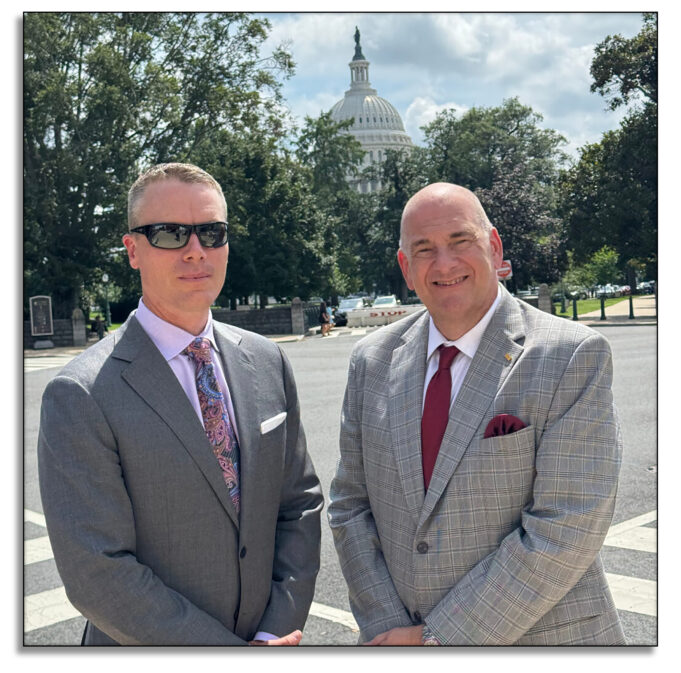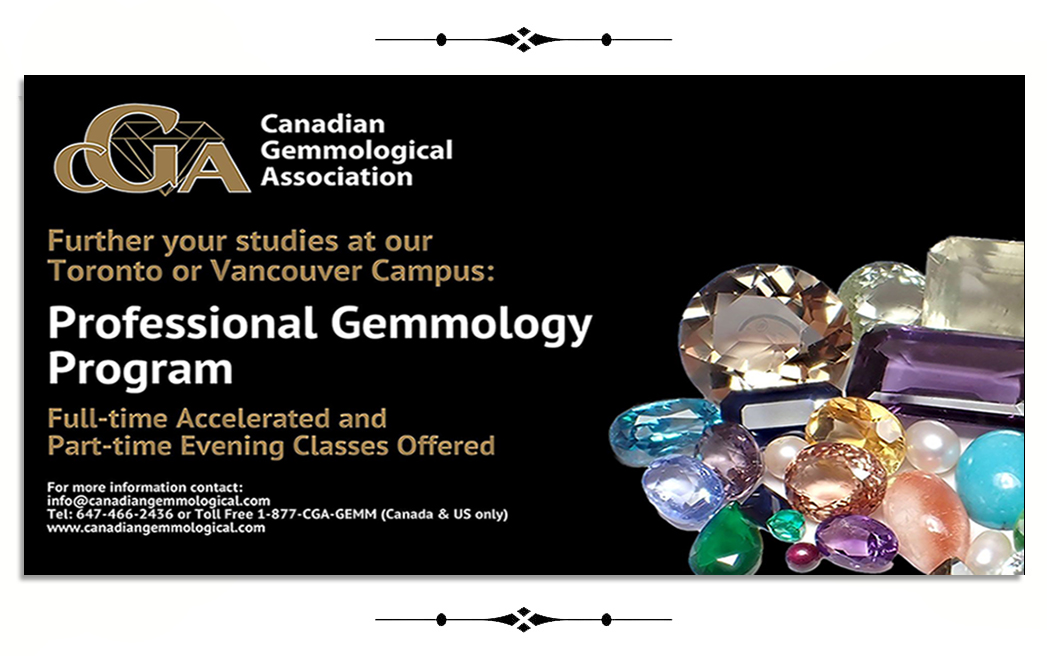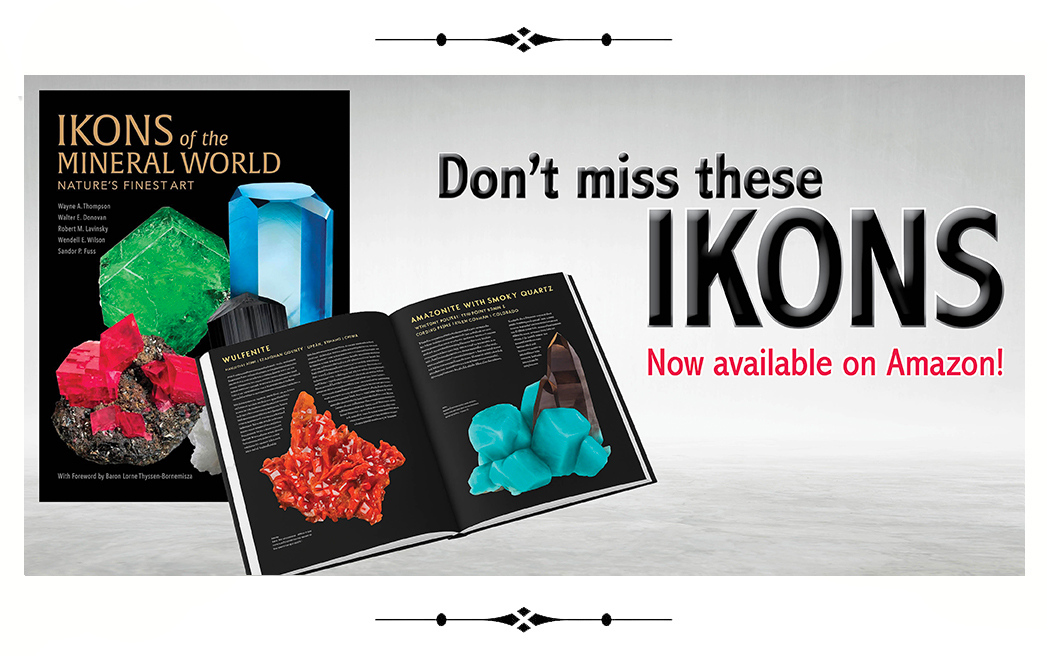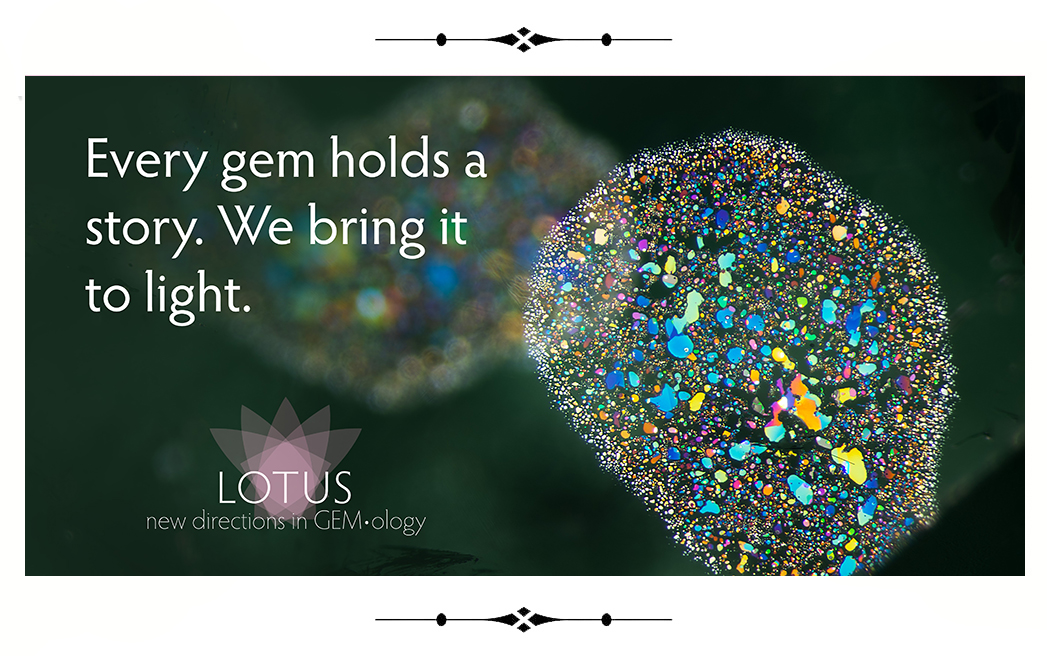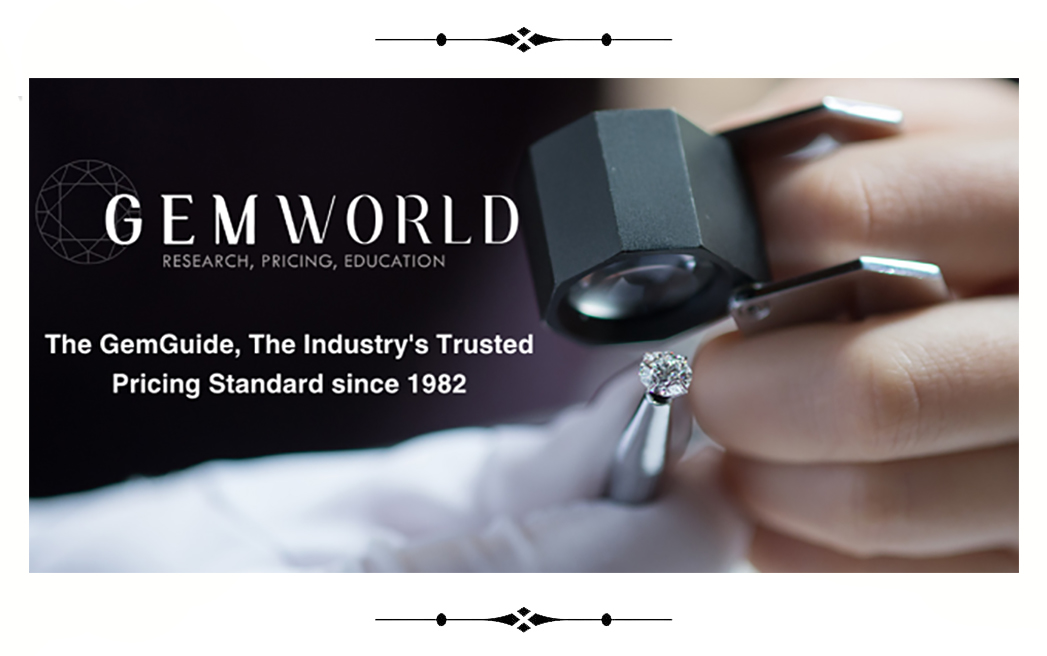You might think that all this tariff “stuff” doesn’t really affect you.
But it does — far more than most jewelers realize.
Behind the scenes, the American Gem Trade Association (AGTA) has been fighting a quiet, complex, and costly battle in Washington, D.C. As AGTA CEO John Ford and AGTA President Bruce Bridges tell it, AGTA’s work has not only helped to get gemstone shipments moving again into the U.S. — it has effectively saved the global industry.
The U.S. and the International Colored Gem Market — Why It Matters
“The U.S. is the biggest market for color in the world. Without the United States, the whole industry suffers,” Bridges says. There’s an old economist’s saying: “If America sneezes, the whole world catches a cold.” The American market for colored gemstones plays an important role in sustaining global trade. So when the U.S. economy slows, the effects are felt everywhere.
When tariffs threaten to choke the flow of colored gemstones into the U.S., it isn’t just dealers who feel the squeeze. From mining towns in East Africa to cutting centers in Thailand and Sri Lanka, livelihoods across the globe hang in the balance.
How Tariffs Have Interrupted Business
In his second term, President Trump signed sweeping trade measures on April 2, 2025, dubbing it “Liberation Day.” That order imposed a 10 percent baseline tariff on nearly all imports, effective April 5, with additional country-specific “reciprocal” tariffs beginning April 9.
When you examine the specifics, Washington applied broad tariffs under industrial mineral codes — and gemstones, being minerals, were caught in the dragnet, treated like chemicals or raw ores instead of luxury materials. Gemstone importers suddenly faced duties that simply did not exist in the United States.
These duties, or tariffs, are taxes on imported goods that raise their landed cost. In practice, they add expense to materials that have to come from overseas. For gem and jewelry businesses like ours, that means we’re paying extra duty on stones we can’t source domestically. Those added costs cut into margins, ripple through the supply chain, and make it harder for American jewelers to compete with finished jewelry produced abroad.
In our industry, tariffs pose an especially acute problem. Most colored gemstones — emeralds, rubies, sapphires, opals, tanzanites — come from a handful of producing countries. Yes, the U.S. has small deposits of certain gem materials, but not in the volume or quality needed to sustain the industry. With no real domestic alternative, the burden falls entirely on importers, designers, and manufacturers here at home.
AGTA Jumped on the Problem Immediately
Ford says AGTA moved fast: within days of the tariff announcement, the association assembled a bipartisan D.C. team of trade attorneys and lobbyists to educate Congress and the White House that colored gemstones are minerals not available in the U.S. He emphasizes that congressional support — calls and letters — was key to getting gemstones addressed at the highest levels.
The Washington Team Behind the Effort
AGTA hired Hecht, Latham, Spencer & Associates, a long-established trade-policy and lobbying firm with deep bipartisan roots. One partner had served more than twenty years as chief counsel to the House Ways and Means Committee under Democratic leadership and had previously worked for Walter Mondale. Another partner’s family had close ties to the Reagan and Bush administrations, and one of the firm’s founders had managed Ronald Reagan’s campaign.
This partnership gave AGTA rare access inside Washington.
Bridges described what that access looked like on the ground: “If you have a 2:00 meeting [with senators or members of Congress, the USTR, Treasury, or Commerce], you’re not kept waiting. You have a 2:00 meeting.”
He added that those meetings weren’t mere photo ops. “That senator or congressman isn’t just there for a photoshoot. They’re there to listen — and they listened. For thirty, forty-five minutes, an hour. And at the end of the meetings they’d ask, ‘What can I do to help?’”
Ford and Bridges would answer with the same request: please write letters of support, please contact the administration. And, as Bridges noted, “they all agreed to do so.”
Ford stressed AGTA’s bipartisan approach, noting, “I go into the Democratic Club, I go to the Republican Club — we deal with whoever we need to deal with.”
AGTA had deliberately chosen a team effective “on both sides of the aisle.” With a Republican White House and Republican-controlled House and Senate, Ford and Bridges were fully aware of the power dynamics in play.
How Washington Works — and How You Get Their Attention
This was never about photo ops. Bridges explained that they were “literally working with D.C. every day.” AGTA remains the only gem and jewelry association with full-time representation in Washington — maintaining contacts, setting up meetings, and ensuring that the colored gemstone industry’s voice is heard.
The argument they made was practical: tariffs intended to boost U.S. manufacturing were, in reality, raising costs on gemstones that must be imported, putting American jewelry manufacturers at a disadvantage compared with overseas competitors.
Education and Expertise — A Critical Component
Bridges focused lawmakers on geology: “It’s simply that geologically, we do not have these resources in the US. They did not form here.”
He paired that with industry structure. Ford would open meetings by explaining who AGTA is, how the supply chain works, and that the U.S. is a net exporter — and then Bridges would explain why these minerals don’t occur here at all.
Bridges’ background made the case tangible: “My family has been mining in Africa for over 100 years… my grandfather… wrote the Geology of Tanganyika before it became Tanzania… I’ve been in mining my whole life all over Africa.”
Once the geology clicked, the policy implications did too. Bridges contrasted U.S. and European realities:
“Cartier can import these stones into their house in Paris duty free… Tiffany… would be importing the same stones, plus whatever tariff… therefore making them less competitive.”
We’re literally penalizing our own manufacturers for doing business the right way — at home.
Lawmakers responded to that clarity.
From Tariffs to Annex III
If you’ve been following this story, you might wonder why we haven’t mentioned Annex III until now — the section of the U.S. tariff schedule that quietly determines which imported products qualify for exemption from duties. It’s the fine print that decides who pays and who doesn’t.
It wasn’t magic. AGTA’s months of work in Washington landed gemstones on that exemption list. As Ford noted, “it wasn’t because somebody at the White House likes jewelry… it was because we had a number of congressmen, led by Randy Weber of Texas, send letters [and] call Trump,” ensuring gemstones were elevated for decision. That push culminated in the September 2 executive order recognizing gemstones as minerals not available in the U.S., placing them into Annex III.
Annex III runs hundreds of pages and reads mostly like an inventory of industrial materials.. Ford put it bluntly: “Most of it has to do with pharmaceuticals, [and] chemicals… and then there’s jewelry… we were beating way above our average.”
The catch: being listed in Annex III isn’t the end — it’s the beginning. For the exemption to take hold, each source country must negotiate or update a trade agreement with the United States that incorporates the Annex III language so the waiver becomes legally effective for that country’s exports. That’s why AGTA’s work now extends to partner nations and embassies.
And that’s also why it was vital for AGTA to be in Washington from the start. Had they not jumped in with both feet immediately, gemstones would never have made the exemption list.
Who’s Next? Asia — Then the World
Bridges outlined the immediate priorities: “Right now, it’s Thailand and Sri Lanka,” while AGTA is also “talking to Zambia, Mozambique, Kenya, Tanzania, [and] even Australia and Indonesia.” The goal is reciprocal agreements that remove tariffs country by country. “If Thailand opens… everything else follows. Asia is the key.”
Ford added that they are not waiting for outcomes; they are working “to bring it across the finish line.”
AGTA’s Work Resonated Beyond Jewelry
Ford noted that once AGTA made the case for “minerals not available in the U.S.,” other manufacturing sectors with similar dependencies aligned with the effort — a coalition effect that helped keep gemstones on the list and in the discussion.
Bridges didn’t mince words about stakes: this was “a life or death struggle… for the industry.”
Giving Credit Where It’s Due
Ford credited AGTA’s membership for funding the effort and acknowledged Matt Stuller’s help with the Louisiana delegation at critical moments. He also emphasized the association’s now-established credibility: “They know us now. When we call, people listen.”
A Closing Thought
What began as bureaucratic misclassification became one of the most consequential trade course-corrections in modern gem history. The world’s colored-stone industry remains in motion because two men — backed by a determined trade association — refused to let silence become policy.
“We didn’t go to Washington for a photo op,” Ford said in summation. “We went to make sure our industry wasn’t forgotten.”
AGTA Tariff Announcements
- Press Release: May 1, 2025 – AGTA Meets with Government Officials & Trade Representatives in Washington About Tariffs https://agta.org/press-release-agta-meets-with-government-officials-trade-representatives-in-washington-about-tariffs/
- Social Media: May 1, 2025 – AGTA Meets with Government Officials & Trade Representatives https://www.instagram.com/p/DJHSL0LO8YP/?img_index=1
- Press Release: May 21, 2025 – AGTA Update on Continuing Efforts in Washington to Eliminate Colored Gemstone Tariffs https://agta.org/press-release-agta-update-on-continuing-efforts-in-washington-to-eliminate-colored-gemstone-tariffs/
- Rapaport Social Media: June 13, 2025 – AGTA Meets with Government Officials & Trade Representatives https://www.instagram.com/p/DK3R24UzWf3/?img_index=1
- Letter to AGTA Membership: July 30, 2025 – AGTA Intensifies Efforts to Oppose Tariffs on Loose Colored Gemstones https://agta.org/letter-to-agta-membership-agta-intensifies-efforts-to-oppose-tariffs-on-loose-colored-gemstones/
- Social Media: August 7, 2025 – AGTA Intensifies Efforts to Oppose Tariffs on Loose Colored Gemstones https://www.instagram.com/p/DNDqetwNmbs/?img_index=1
- Seminar Series Recording: August 13, 2025 – AGTA Organizes “Talking Tariffs” Panel Discussion in New York City https://agta.org/agta-organizes-talking-tariffs-panel-discussion-in-new-york-city/
- Letter to AGTA Membership: September 8, 2025 – Clarification on Potential Tariff Adjustments for Aligned Partners Annex III https://agta.org/letter-to-agta-membership-clarification-on-potential-tariff-adjustments-for-aligned-partners-annex-iii/
- Social Media: September 9, 2025 – Clarification on Potential Tariff Adjustments for Aligned Partners Annex III https://www.instagram.com/p/DOYrjcbjQoZ/?img_index=1
- Letter to AGTA Membership: September 22, 2025 – Continued Efforts to Oppose Tariffs on Loose Colored Gemstones https://agta.org/letter-to-agta-membership-continued-efforts-to-oppose-tariffs-on-loose-colored-gemstones/
- Social Media: September 22, 2025 – Continued Efforts to Oppose Tariffs on Loose Colored Gemstones https://www.instagram.com/p/DO6bMM0DwDQ/?img_index=1
- Letter from President Bruce Bridges and CEO John Ford: September 24, 2025 – Letter About US Federal Register https://fc0wj.r.sp1-brevo.net/mk/mr/sh/OycXxko2a8zXOEVAd6l1Wf1c/gCeFODypItkl
- AGTA News: September 25, 2025 – Duty-free Import Status For Loose Color & Natural Pearls https://fc0wj.r.sp1-brevo.net/mk/mr/sh/OycXxko2a8zXOEVAd6l1Wf1c/-RJ6MHzN_zlI
- Social Media: September 25, 2025 – Duty-free Import Status For Loose Color & Natural Pearls https://www.instagram.com/p/DPCEYNLjVDR/



